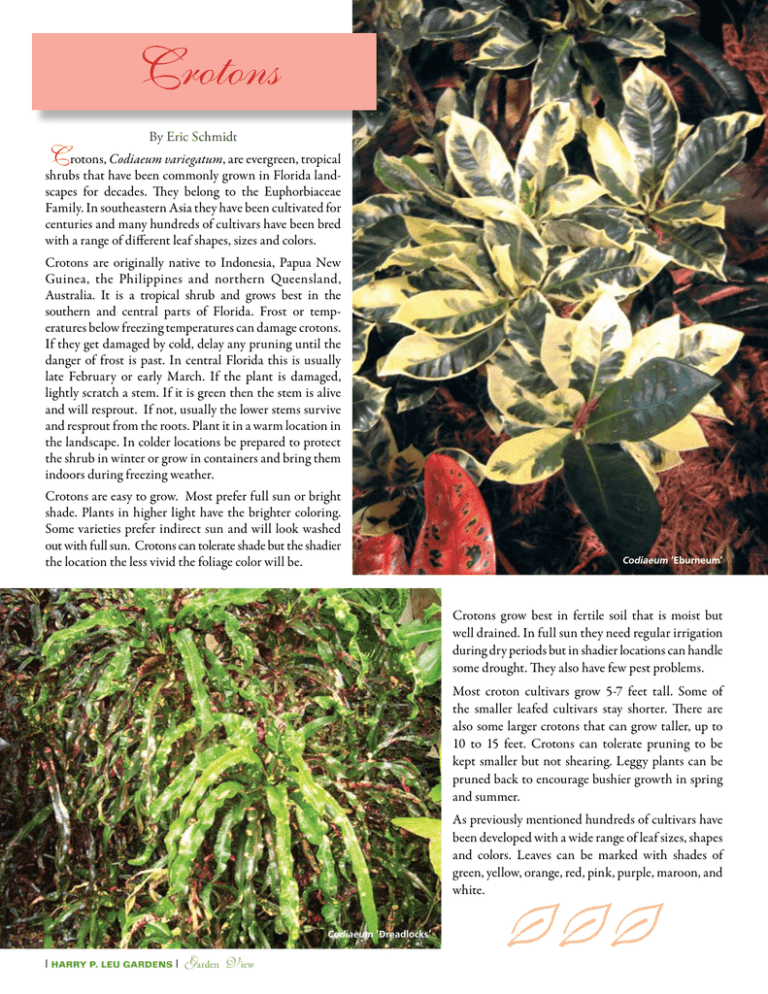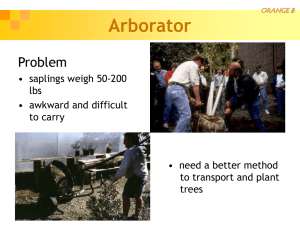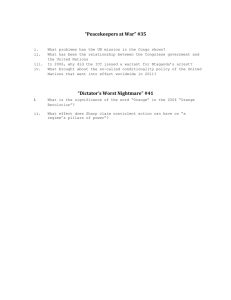Crotons - Leu Gardens
advertisement

Crotons By Eric Schmidt C rotons, Codiaeum variegatum, are evergreen, tropical shrubs that have been commonly grown in Florida landscapes for decades. They belong to the Euphorbiaceae Family. In southeastern Asia they have been cultivated for centuries and many hundreds of cultivars have been bred with a range of different leaf shapes, sizes and colors. Crotons are originally native to Indonesia, Papua New Guinea, the Philippines and northern Queensland, Australia. It is a tropical shrub and grows best in the southern and central parts of Florida. Frost or temperatures below freezing temperatures can damage crotons. If they get damaged by cold, delay any pruning until the danger of frost is past. In central Florida this is usually late February or early March. If the plant is damaged, lightly scratch a stem. If it is green then the stem is alive and will resprout. If not, usually the lower stems survive and resprout from the roots. Plant it in a warm location in the landscape. In colder locations be prepared to protect the shrub in winter or grow in containers and bring them indoors during freezing weather. Crotons are easy to grow. Most prefer full sun or bright shade. Plants in higher light have the brighter coloring. Some varieties prefer indirect sun and will look washed out with full sun. Crotons can tolerate shade but the shadier the location the less vivid the foliage color will be. Codiaeum ‘Eburneum’ Crotons grow best in fertile soil that is moist but well drained. In full sun they need regular irrigation during dry periods but in shadier locations can handle some drought. They also have few pest problems. Most croton cultivars grow 5-7 feet tall. Some of the smaller leafed cultivars stay shorter. There are also some larger crotons that can grow taller, up to 10 to 15 feet. Crotons can tolerate pruning to be kept smaller but not shearing. Leggy plants can be pruned back to encourage bushier growth in spring and summer. As previously mentioned hundreds of cultivars have been developed with a wide range of leaf sizes, shapes and colors. Leaves can be marked with shades of green, yellow, orange, red, pink, purple, maroon, and white. Codiaeum ‘Dreadlocks’ | Harry P. Leu Gardens | G arden V iew Here are some descriptions for some of the more easily obtainable cultivars we are growing at Leu Gardens: Codiaeum ‘Mrs. Iceton’ ‘AFD 5’ – leaves are green with yellow veins fading to red as they mature ‘Aureo Maculatum’ – also known as ‘Gold Dust’, smaller green leaves with yellow spotting ‘Corkscrew’ – narrow green leaves with yellow markings and are twisted ‘Dreadlocks’ – narrow, twisted and hanging leaves that are green and yellow turning red and maroon ‘Eburneum’ – puckered leaves with cream markings ‘Eleanor Roosevelt’ – narrow green leaves with yellow spots ‘Franklin Roosevelt’ – narrow leaves with red, orange, yellow, green, and maroon coloring Codiaeum ‘Diane’ ‘General Paget’ – very large leaves that are green and yellow, a larger growing variety ‘Magnificent’ – large leaves marked with green, yellow, red, pink, and maroon ‘Mammey’ – narrow, twisted leaves that are mostly a bright orange and red but with some green and yellow, very common ‘Mother and Daughter’ – unusual narrow leaves that are green on top and maroon underneath, the leaf appears to be connected to a second leaf by a midrib ‘Mrs. Iceton’ – new leaves emerge green and yellow and mature to maroon and pink, this one likes light shade ‘Petra’ – large, green and yellow leaves turning orange and red as they mature, currently the most widely available variety Codiaeum ‘Stoplight’ ‘Picasso’s Paintbrush’ – very narrow, slender leaves colored green, yellow, orange, red, and maroon ‘Pinocchio’ – smaller orange and red leaves with orange, yellow and green spots ‘Purity’ – large green leaves with white or light yellow markings, a larger growing variety ‘Rudy Bachman’ – large green leaves with yellow spots and veins turning orange and red ‘Sunny Star’ – narrow, short green leaves with yellow markings ‘Zanzibar’ – narrow and drooping leaves colored green, yellow, orange, and red Harry P. Leu Gardens |



